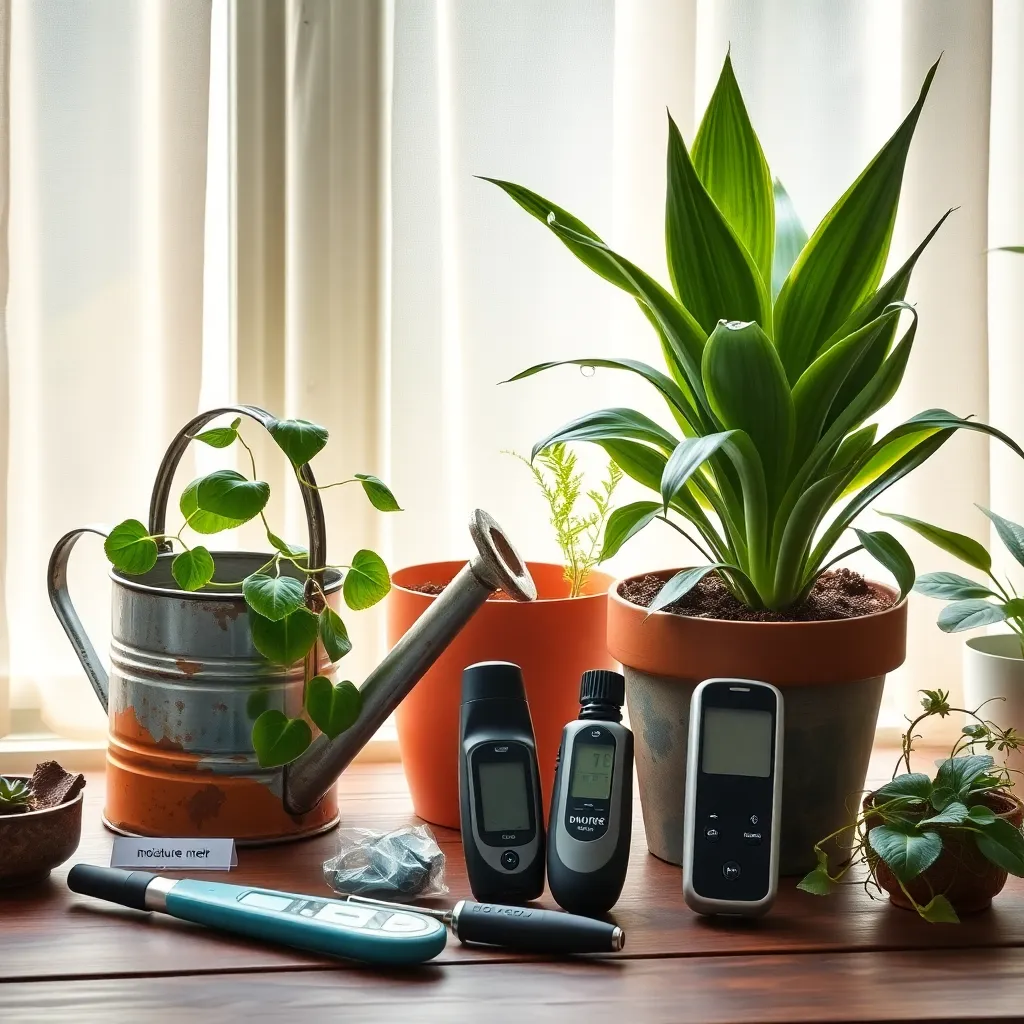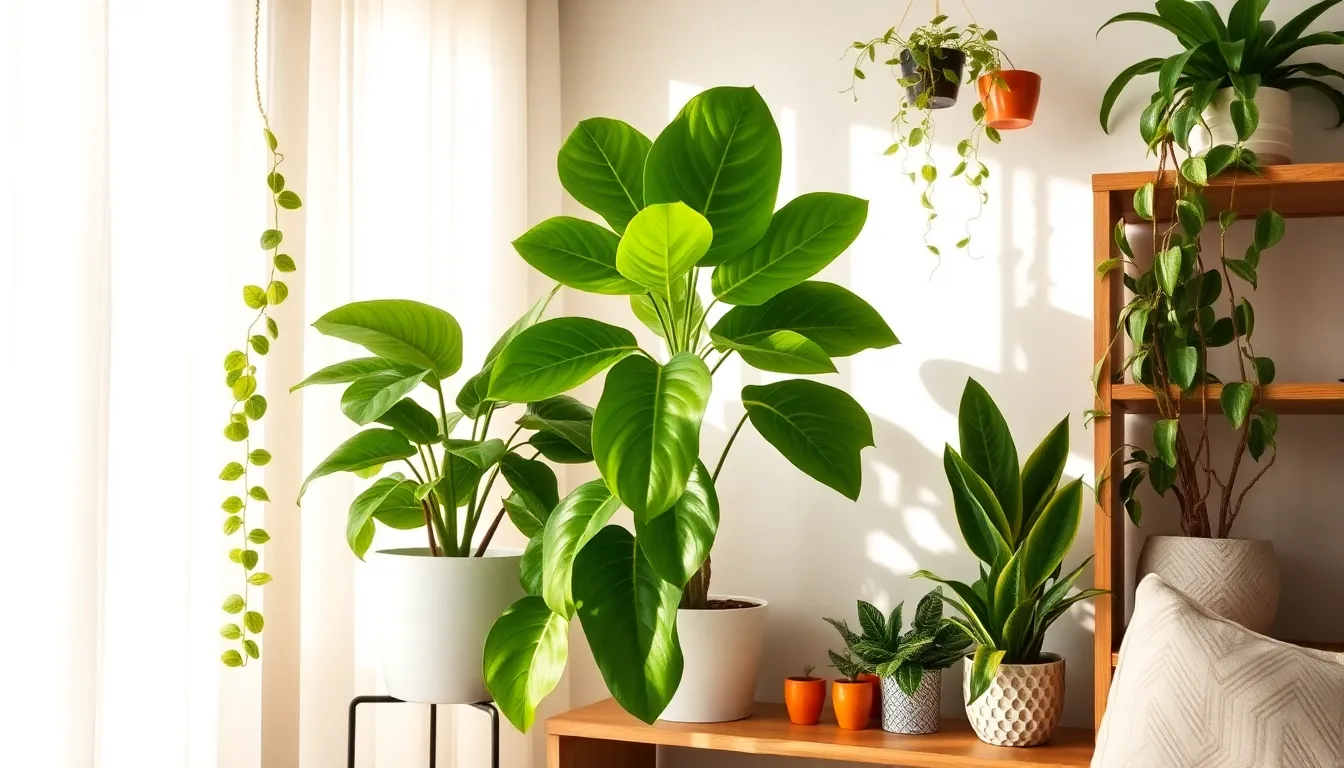Creating a vibrant indoor garden that’s safe for your furry friends is a joy that every plant lover can embrace. Whether you’re a seasoned gardener with a penchant for leafy greens or a beginner just starting to nurture your green thumb, choosing pet-friendly houseplants is a delightful way to bring nature indoors without compromising your pets’ safety. This is not just about beautifying your space; it’s about harmonizing the natural world with the comfort of home for every member of the family—human and animal alike.
In our guide, “8 Pet-Friendly Houseplants to Grow at Home,” we’ll walk you through a selection of lush, non-toxic plants that will brighten your living space while keeping your beloved pets out of harm’s way. You’ll discover practical tips on care and placement, ensuring that both plants and pets thrive in your cozy sanctuary. From the resilient Spider Plant to the elegant Boston Fern, each plant offers a unique aesthetic and requires varying levels of care, making them perfect companions for gardeners of all experience levels. So, prepare to enrich your indoor environment with greenery that’s as safe as it is stunning.
Understanding Pet-Safe Plant Choices
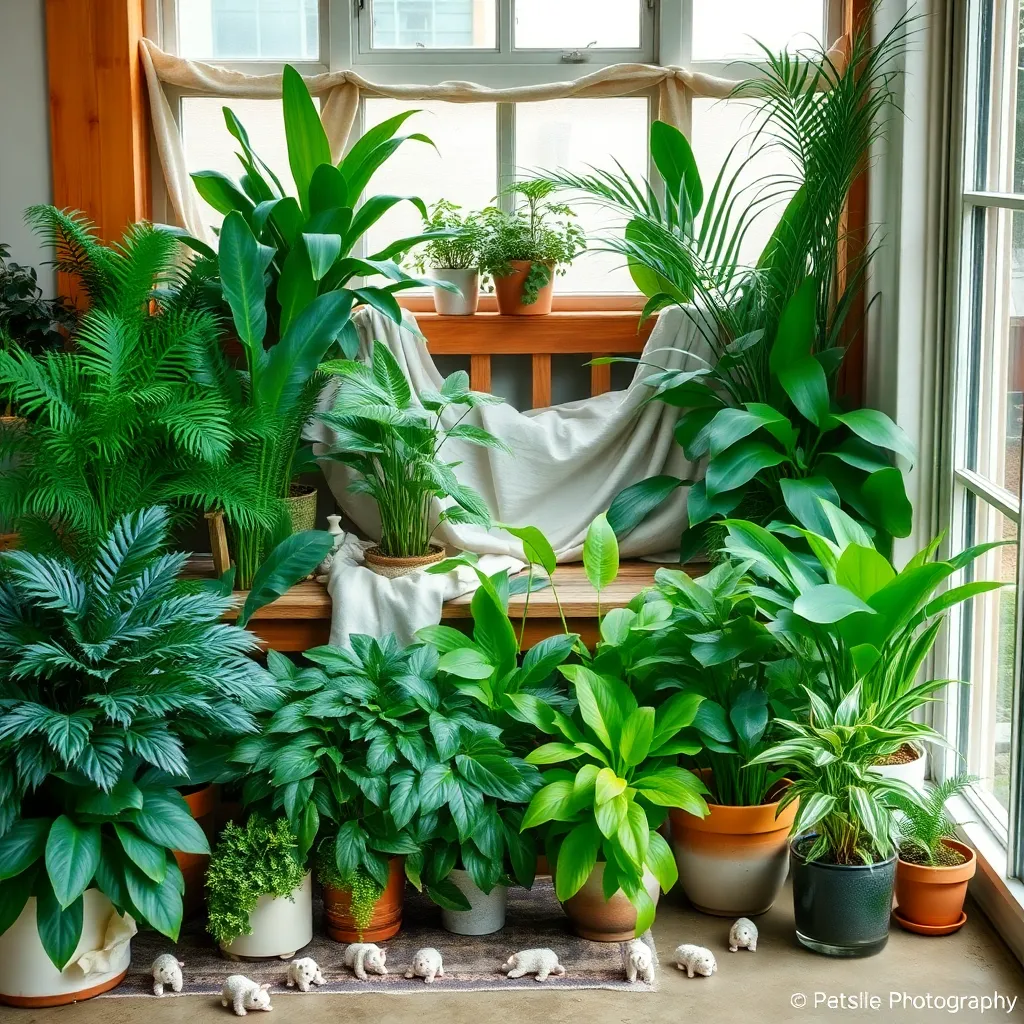
When selecting plants that are safe for pets, it’s essential to consider both the species and their growing conditions. Opt for plants that are non-toxic to cats and dogs, such as spider plants or Boston ferns, which are excellent choices for households with animals.
To ensure your pet-friendly plants thrive, pay attention to their specific care requirements. Most pet-safe houseplants prefer well-draining soil, such as a peat-based potting mix, and should be watered when the top inch of soil feels dry.
Lighting conditions are another crucial factor to consider for healthy plant growth. While many pet-safe plants like indirect sunlight, make sure to place them in a spot where they can receive adequate light without being directly exposed to harsh sun rays.
For those looking to deepen their gardening skills, consider experimenting with propagation techniques. Plants like the spider plant can be easily propagated by taking cuttings from their offshoots and placing them in water until roots develop, providing more greenery and additional safe spaces for your pets.
Top Non-Toxic Plant Varieties

When selecting pet-friendly houseplants, it’s essential to consider varieties that are both beautiful and safe for your furry companions. Spider plants (Chlorophytum comosum) are a fantastic choice, known for their easy care and attractive arching leaves.
Spider plants thrive in indirect sunlight and prefer well-draining soil, making them ideal for most indoor environments. Water them moderately, allowing the soil to dry out slightly between waterings to prevent root rot.
For a splash of color, consider growing African violets (Saintpaulia), which are non-toxic and easy to care for. These plants flourish in bright, indirect light and require a potting mix specifically designed for African violets to ensure proper drainage and moisture retention.
African violets love humidity, so consider placing a small tray of water near them to boost moisture levels in the air. Water these beauties from the bottom to avoid getting water on their delicate leaves, which can cause spots or rot.
If you’re looking for a trailing plant, Boston ferns (Nephrolepis exaltata) are an excellent pet-safe option. These ferns enjoy high humidity and indirect light, making them perfect for bathrooms or kitchens.
Keep the soil of Boston ferns consistently moist, but not soggy, by checking the top inch of soil regularly. For advanced care, mist the leaves occasionally or use a humidifier to mimic their natural tropical environment.
Light Needs for Safe Plants
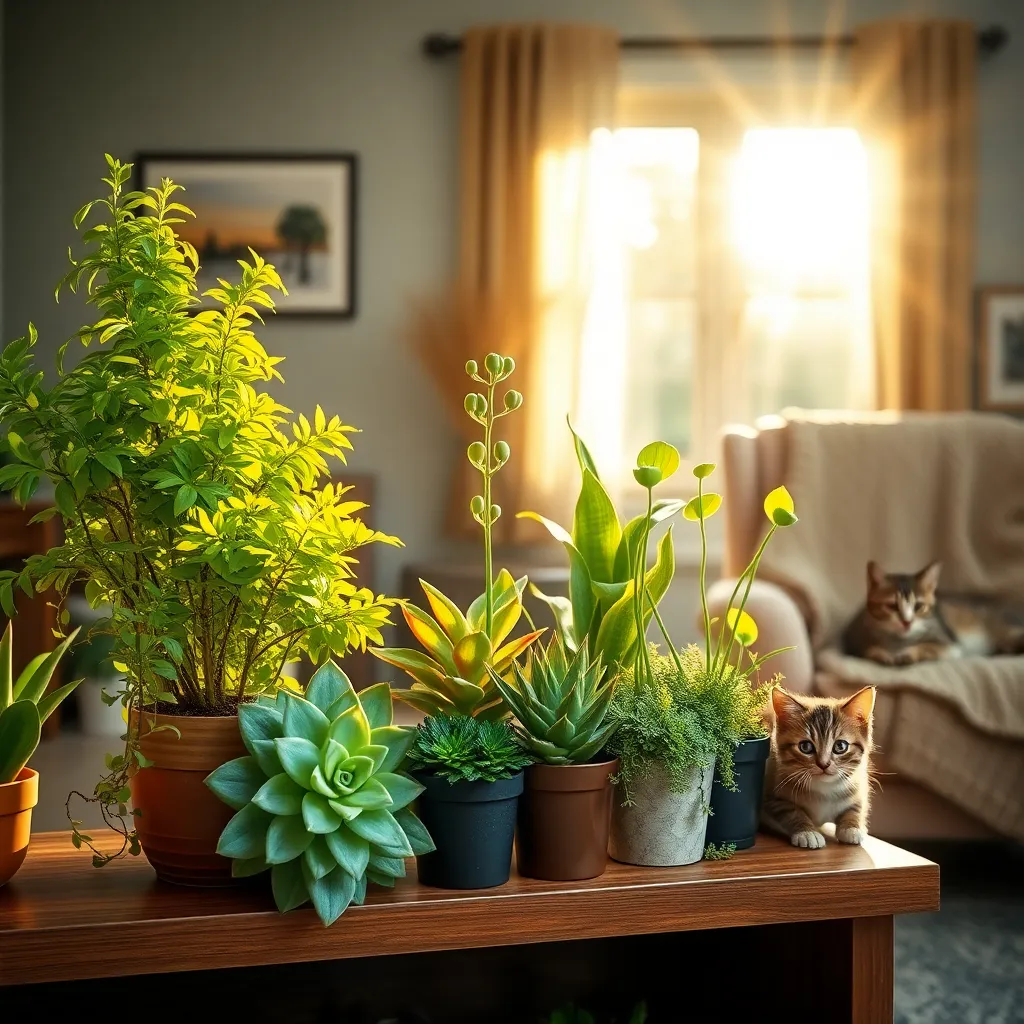
Understanding the light needs of your pet-friendly houseplants is crucial to their thriving. Most of these plants prefer indirect light, making them ideal for spaces where direct sunlight is limited.
Spider Plants, for instance, flourish in bright, indirect sunlight but can tolerate lower light levels. Position them near a north or east-facing window to ensure they receive enough light without being scorched.
If you’re growing Boston Ferns, place them in a spot with filtered light, such as near a shaded window, as direct sunlight can damage their delicate fronds. Regularly rotating your fern pot can help promote even growth.
For a Parlor Palm, which is another great pet-friendly choice, consider a location that mimics its natural tropical habitat. This means placing it in a spot where it gets bright, filtered light, avoiding direct sun exposure to prevent leaf burn.
To optimize light conditions, consider using sheer curtains to diffuse intense sunlight for more sensitive plants. Additionally, supplementing with artificial grow lights can be beneficial during darker months or in rooms with limited natural light.
Ideal Soil for Pet-Friendly Greens
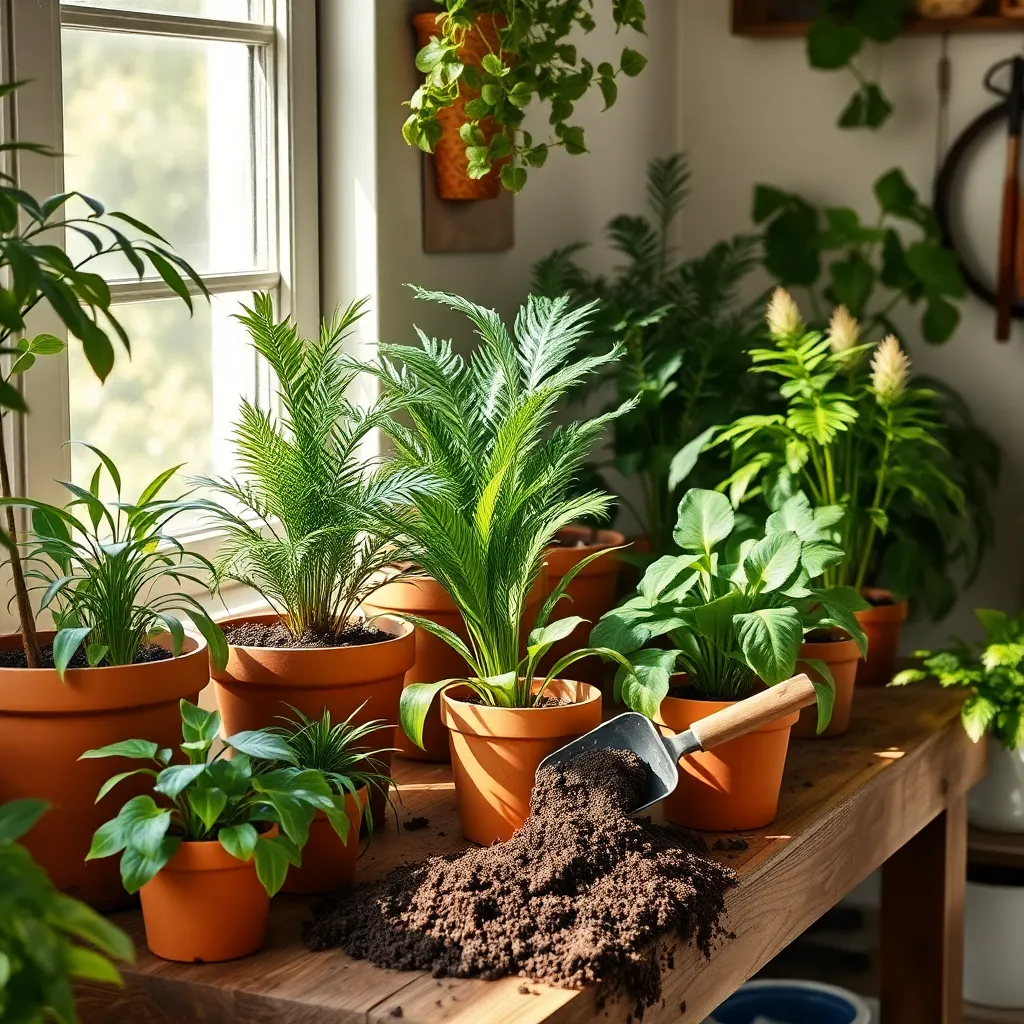
When it comes to choosing the ideal soil for pet-friendly greens, focus on a well-draining potting mix. A mix containing peat moss, perlite, and pine bark is excellent for maintaining the right balance of moisture and aeration.
Ensure that the potting soil is free of any fertilizers or additives that could be harmful to pets. This can be achieved by selecting organic potting mixes, which are generally safer and more natural for both plants and pets.
For those growing succulents, a specialized cactus or succulent mix is recommended due to its excellent drainage properties. This type of soil helps prevent root rot, which is crucial for the health of these water-sensitive plants.
Advanced gardeners might consider customizing their soil mix to suit specific plant needs by adding elements like vermiculite for moisture retention or sand for improved drainage. Experimenting with different ratios can help you find the perfect blend that supports healthy plant growth while ensuring pet safety.
Watering Tips for Healthy Growth

Watering your pet-friendly houseplants correctly is crucial for their health and vigor. It’s important to understand that different plants have varied water needs, so a one-size-fits-all approach won’t work.
For most houseplants, allow the top inch of soil to dry out before watering again. This practice helps prevent root rot, which is a common issue when plants are overwatered.
Use room temperature water to avoid shocking the plant’s roots, especially for sensitive species like the Spider Plant. This simple step can significantly enhance your plant’s ability to absorb nutrients effectively.
Consider setting up a watering schedule to maintain consistency, which is key for plant health. For plants like the Boston Fern, which prefers a more humid environment, misting them between waterings can mimic their natural habitat.
More advanced gardeners might invest in a moisture meter to ensure precision. This tool can help avoid the guesswork in determining when to water, particularly beneficial for plants with specific moisture requirements like the Areca Palm.
Fertilizing Without Harm to Pets
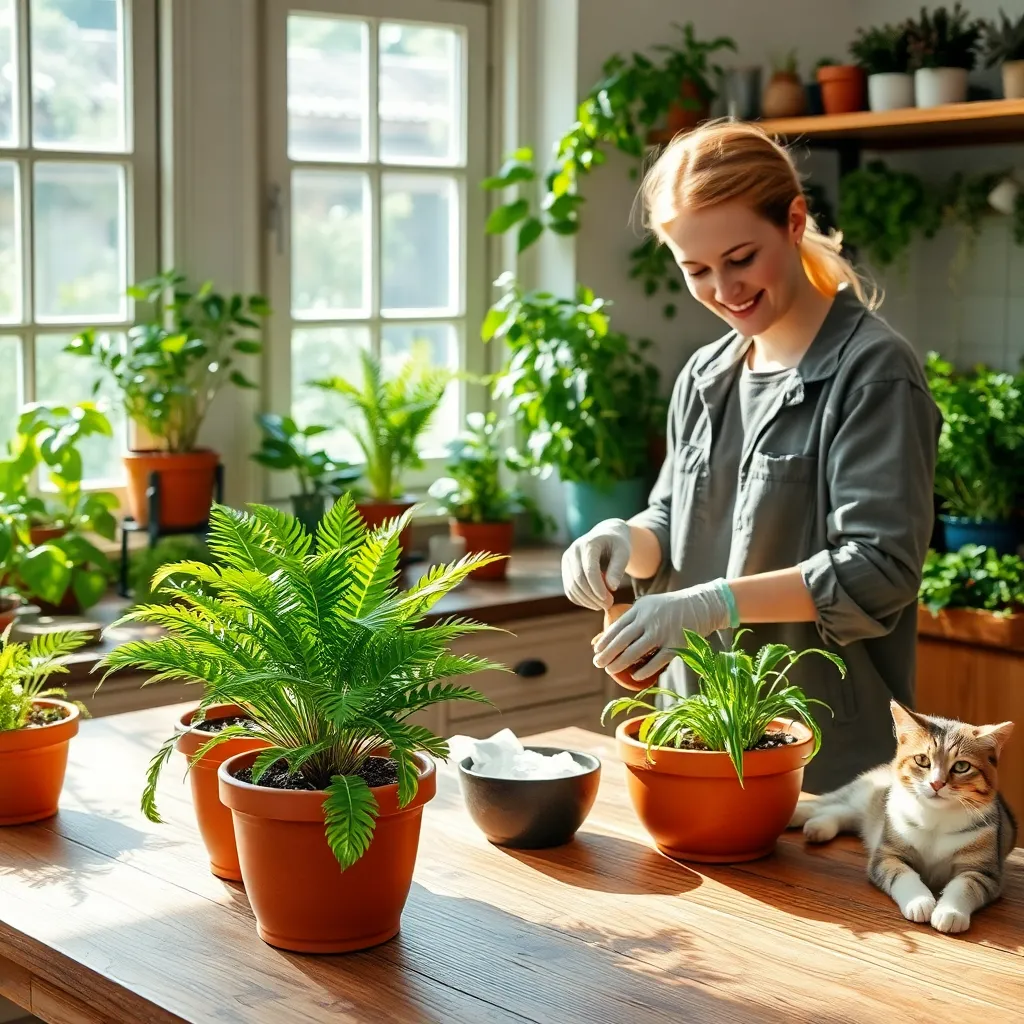
When fertilizing houseplants, it’s important to choose products that won’t harm your pets. Opt for organic fertilizers that are labeled as pet-safe, such as those made from bone meal, fish emulsion, or seaweed extract.
Alternatives to traditional fertilizers include homemade compost or vermicompost, which enrich your soil naturally. These options not only nourish your plants but also ensure that your environment remains safe for curious pets.
Always read and follow the instructions on the fertilizer package to avoid overfeeding, which can be harmful to both plants and pets. It’s also wise to apply fertilizers in the evening or early morning when your pets are less active, minimizing their contact with freshly treated soil.
For advanced gardeners, consider using a slow-release fertilizer that gradually breaks down over time. This reduces the frequency of application and lowers the risk of your pets encountering concentrated doses of nutrients.
Common Pests and Safe Solutions
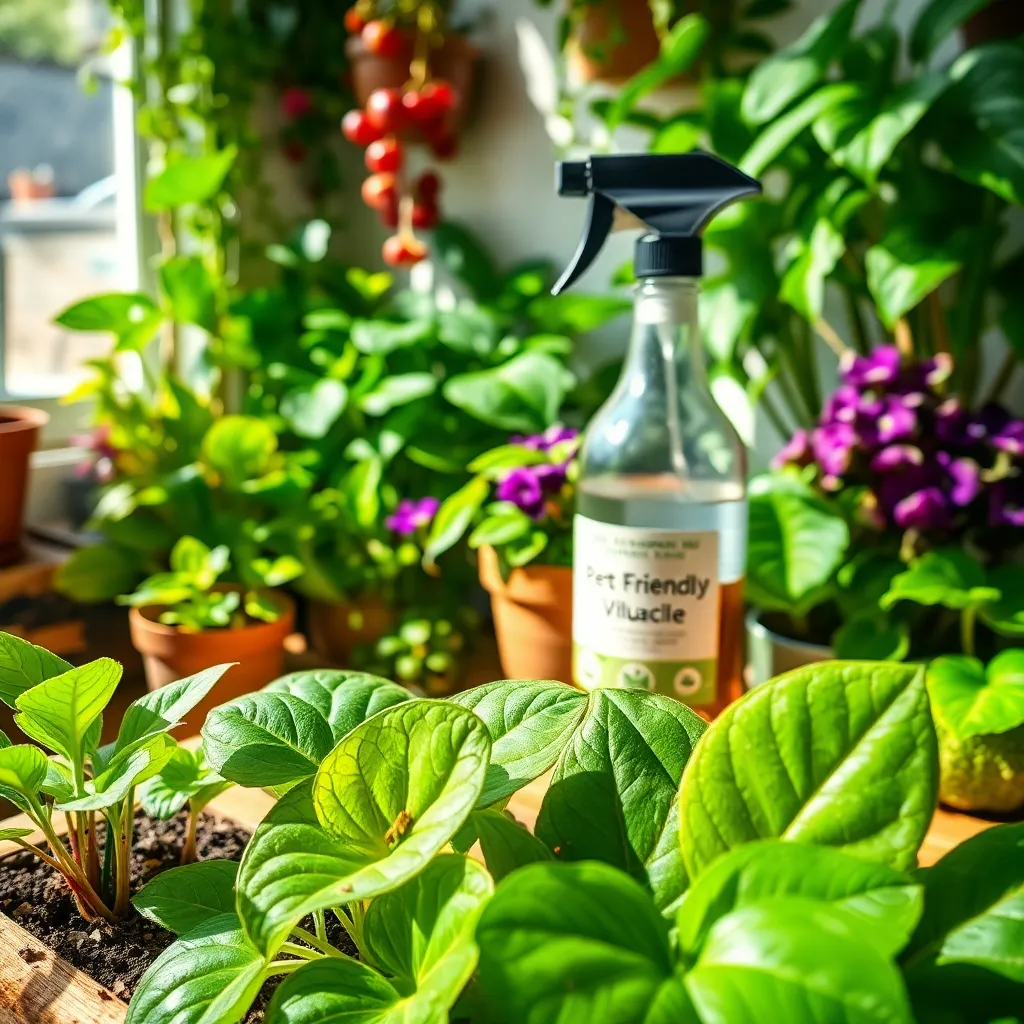
Houseplants can occasionally attract common pests, but there are safe solutions that won’t harm your pets. Regular inspection of your plants is the first step in early detection, helping to prevent infestations before they become overwhelming.
One effective and pet-friendly method is using insecticidal soap, which can be sprayed directly on affected leaves. This solution works well on pests like aphids and spider mites without risking your furry friends’ health.
Neem oil is another excellent option, known for its natural pest-repellent properties. Mix a few drops with water and spray it on your plants’ leaves weekly to keep pests at bay while ensuring your home remains safe for pets.
For those who prefer a DIY approach, a mixture of water and mild dish soap can be used to gently wash pests off plant leaves. Be sure to rinse the leaves after treatment to prevent any soap residue buildup, which can affect plant health.
Styling with Pet-Friendly Plants
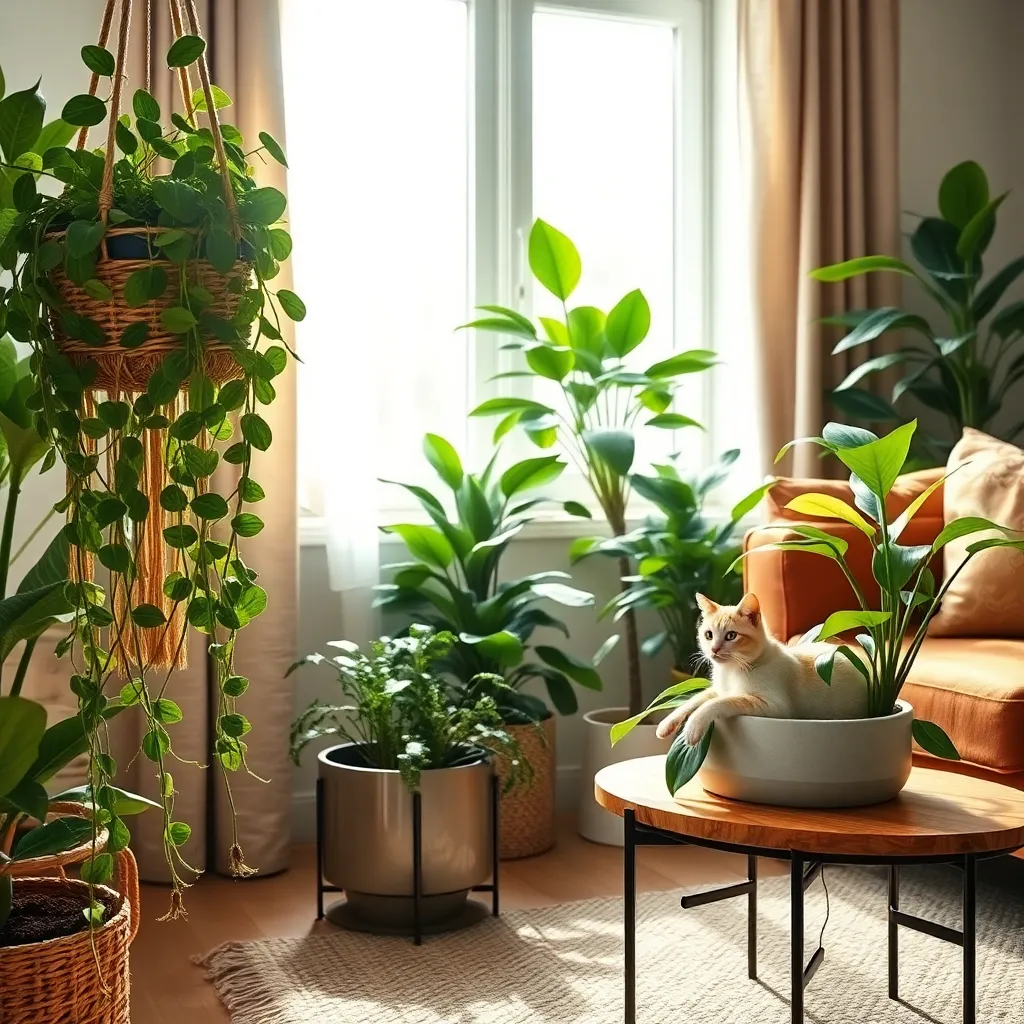
Enhancing your home with pet-friendly plants not only adds beauty but also ensures a safe environment for your furry friends. To create a harmonious space, consider incorporating plants like the Spider Plant, which is non-toxic to pets and thrives in indirect sunlight.
For a touch of color, try the Calathea plant, known for its striking leaf patterns and pet-friendly nature. It prefers a humid environment and requires watering when the top inch of soil feels dry, making it perfect for bathrooms or kitchens.
Another excellent choice is the Bamboo Palm, which can add height and a tropical feel to your decor. Ensure it receives moderate light and water it once the top layer of soil is dry to the touch, promoting a lush, healthy plant.
To enhance your plant styling, group plants with similar care requirements together. This not only simplifies maintenance but also creates a cohesive look; for example, combining the Areca Palm and Boston Fern can create a vibrant, pet-safe corner in your home.
Consider placing plants in attractive pots that complement your interior design, using a mix of heights and textures for visual interest. Opt for pots with drainage holes to prevent overwatering, which is crucial for maintaining plant health.
For advanced gardeners, try rotating your plants every few weeks to ensure even growth and balance. This technique can prevent plants from leaning towards the light, keeping your indoor garden looking tidy and well-maintained.
Conclusion: Growing Success with These Plants
As we’ve explored, the eight pet-friendly houseplants—Spider Plant, Boston Fern, Areca Palm, Calathea, Bamboo Palm, African Violet, Orchid, and Parlor Palm—not only enhance your living space but also bolster the loving relationship between you, your home environment, and your furry friends. These plants are more than just decorative pieces; they symbolize the nurturing and growth that parallels healthy relationships. By choosing pet-safe plants, you’re demonstrating care and consideration, vital elements that strengthen any relationship.
As a next step, why not visit your local nursery or explore online options to bring one of these delightful plants into your home today? Your action will not only beautify your surroundings but also reinforce your commitment to a harmonious household.
Remember, a thriving relationship is built on thoughtful choices and consistent care. Bookmark this article now, so you can revisit these insights whenever you need inspiration or guidance. By embracing these pet-friendly plants, you’re nurturing a space where love can flourish, setting the foundation for continued relationship success. Let this be your starting point towards a more connected and harmonious living space.


